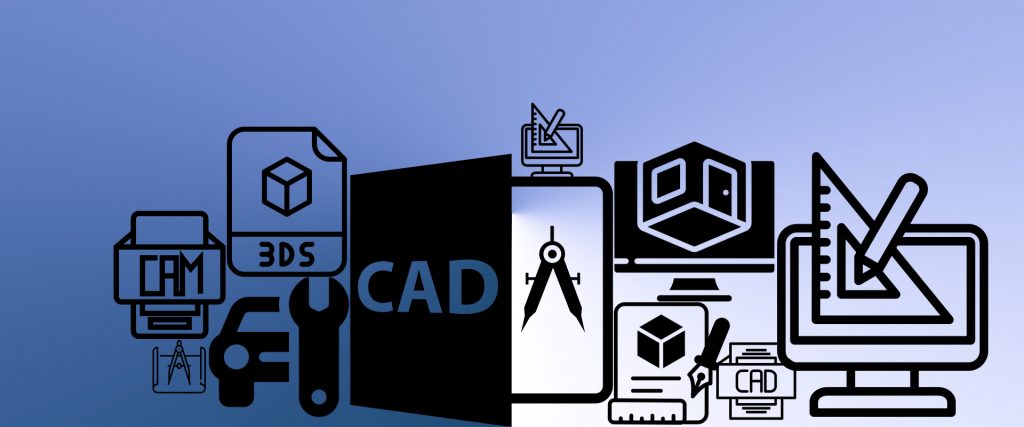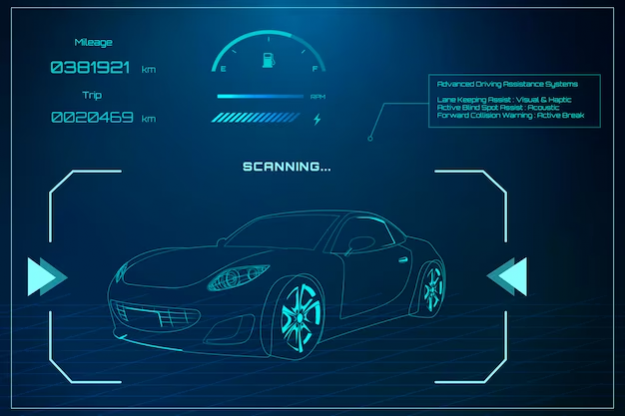"Difference Between CAD, CAM and CAE"

CAD, CAE, and CAM are three important terms in the field of engineering and manufacturing and are three interrelated technologies. While these terms may seem similar, they have distinct differences and are used for different purposes. In this blog, we’ll explore the differences between CAD, CAE, and CAM.
CAD (Computer-Aided Design)
Computer-Aided Design (CAD) is a powerful tool used in various industries to create digital models of products, buildings, or other objects. This technology has revolutionized the way we design and create products, and it has become an essential tool for engineers, architects, and designers.
It is a software-based tool that uses mathematical algorithms to create 2D or 3D models of objects. The software allows designers to create, modify, and analyze their designs quickly and easily.
CAD software can create 2D or 3D models of objects, depending on the application. 2D models are created by using lines and shapes to create a flat representation of an object. 3D models are created by adding depth to the 2D models, allowing designers to view the object from all angles. 3D models are more realistic and provide a better understanding of the object’s features and functionality.
Another advantage of it is that it allows designers to simulate the behavior of their designs under various conditions. For example, engineers can use CAD to simulate the stress and strain on a machine part to ensure that it will perform correctly under different loads. Architects can use CAD to simulate the lighting conditions in a building to optimize natural light and reduce energy consumption.

CAE (Computer-Aided Engineering)

Computer-Aided Engineering (CAE) is a type of software that enables engineers to simulate and analyze the behavior of physical systems under various conditions. This technology has revolutionized the way engineers design products and systems, allowing them to optimize the design for maximum performance, safety, and efficiency.
This software uses mathematical algorithms and simulations to model and analyze the behavior of physical systems. The software can simulate the response of a system to different loads, temperatures, vibrations, and other conditions, providing engineers with a detailed understanding of how the system will perform in real-world conditions.
CAE software is used in various industries, including automotive, aerospace, civil engineering, and manufacturing. In the automotive industry, CAE is used to simulate the performance of vehicle components, such as engines, transmissions, and brakes. In the aerospace industry, CAE is used to simulate the performance of aircraft structures, engines, and other components. In civil engineering, CAE is used to simulate the behavior of structures, such as bridges and buildings, under various loads and environmental conditions.
One of the benefits of CAE is that it allows engineers to optimize the design of a product or system before it is built. By simulating the performance of the system under different conditions, engineers can identify potential problems and make design changes to improve the system’s performance and efficiency. This can save time and money by reducing the number of physical prototypes that need to be built and tested.
CAE is a software tool used to simulate and analyze the performance and behavior of products or parts using advanced mathematical models. CAE software is used to simulate various conditions, such as stress, heat transfer, fluid flow, and electromagnetic behavior, and predict how a product will perform in real-world conditions. CAE software is used in a variety of industries, such as aerospace, automotive, and manufacturing, to optimize the performance and functionality of products or parts.
CAM (Computer-Aided Manufacturing)
Computer-Aided Manufacturing (CAM) is a type of software that is used to automate the manufacturing process, from design to production. CAM software is designed to create a set of instructions that control the machines used to manufacture a product.
The process begins with a digital model created by Computer-Aided Design (CAD) software. This model is then loaded into the CAM software, which creates a set of instructions that control the machines used to manufacture the product. CAM software can automate various manufacturing processes, including milling, drilling, cutting, and turning.
CAM software is used in various industries, including aerospace, automotive, and manufacturing. In the aerospace industry, CAM is used to manufacture complex parts with high precision and accuracy. In the automotive industry, CAM is used to manufacture engine components, suspension systems, and other parts. In the manufacturing industry, CAM is used to automate the production of various products, from electronics to consumer goods.
One of the benefits of CAM is that it can significantly increase efficiency and productivity in the manufacturing process. CAM software can automate many of the tedious and time-consuming tasks involved in manufacturing, such as setting up machines, adjusting tools, and monitoring the manufacturing process. This can save time and reduce the likelihood of errors, resulting in a more efficient manufacturing process.
Another benefit of CAM is that it can improve the quality and consistency of manufactured products. CAM software can ensure that each product is manufactured to the exact specifications of the digital model, resulting in a more precise and accurate final product. This can improve the quality of the product and reduce the likelihood of defects or errors.

The main difference between CAD, CAM, and CAE is their function. CAD software is used to create digital models of objects, CAM software is used to control and automate the manufacturing process, and CAE software is used to simulate and analyze the behavior of objects under various conditions. However, these technologies are often used together in the manufacturing process, with CAD models being used by CAM software to manufacture the object, and CAE software used to analyze the object’s performance.
Conclusion
In conclusion, CAD, CAM, and CAE are three related technologies that are commonly used in the manufacturing industry. While they have some similarities, they serve different purposes, with CAD used to create digital models, CAM used to control the manufacturing process, and CAE used to simulate and analyze the behavior of objects. These technologies work together to streamline the manufacturing process, improve product quality, and increase efficiency.


